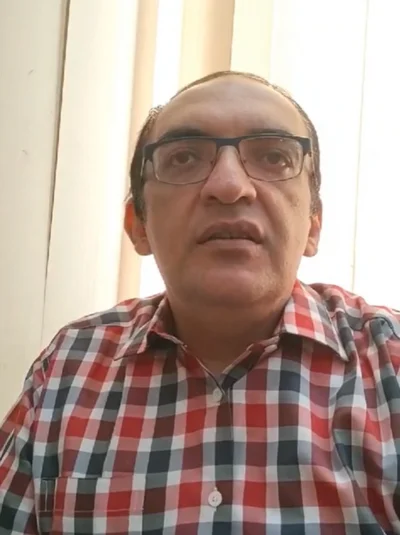Blockchain technology has transformed the digital landscape, offering decentralized, transparent, and secure solutions across various industries. However, scalability solana blockchain devlopment company remains one of the significant challenges that blockchains like Ethereum face, particularly as the demand for decentralized applications (dApps) continues to grow. Layer-2 solutions have emerged as a crucial approach to overcoming these scalability issues, enabling faster transactions, reduced costs, and improved efficiency. This blog will explore the real-world applications of Layer-2 solutions in blockchain, focusing on technical aspects and how they integrate with various decentralized finance (DeFi) tools and platforms.
Understanding Layer-2 Solutions
Before exploring the applications, it’s essential to understand Layer-2 solutions. Layer 2 refers to a secondary framework or protocol built on top of an existing blockchain (Layer 1). The primary objective of Layer 2 is to offload the computational work from the main blockchain, thereby enhancing scalability and throughput.
Some of the popular Layer-2 solutions include:
- Rollups: Bundling multiple transactions into one transaction reduces the data that must be processed on the main blockchain.
- State Channels: Allowing two parties to transact off-chain while only submitting the final state to the blockchain.
- Sidechains: Independent blockchains connected to the main chain, where transactions are executed on the sidechain before relaying to the main blockchain.
These solutions significantly reduce transaction fees and enhance transaction speed, making them particularly useful in the rapidly expanding DeFi sector.

Enhancing DeFi Wallet Functionality
One primary application of Layer-2 solutions is improving the performance and functionality of DeFi wallets. DeFi wallets are crucial tools that enable users to interact with decentralized applications, manage their assets, and participate in DeFi activities such as staking and lending. However, high gas fees and slow transaction times on Layer-1 blockchains can be prohibitive.
Layer-2 solutions address these issues by providing faster and more cost-effective transaction processing. Blockchain development company play a vital role in integrating Layer-2 solutions into DeFi wallets, ensuring that users benefit from reduced fees and quicker transactions. By leveraging these solutions, DeFi development companies enhance the overall user experience, making DeFi wallets more efficient and accessible, which is essential for the growth and adoption of decentralized finance.
Layer-2 solutions address these issues by enabling faster and cheaper transactions. For instance, integrating Layer-2 solutions like zk-Rollups or Optimistic Rollups into DeFi wallets allows instant transactions with minimal fees. This integration is particularly beneficial for users looking to execute small transactions or micro-payments, which would otherwise be costly on the Layer-1 blockchain.
Optimizing DeFi Staking Platforms
DeFi staking has gained immense popularity as a way for users to earn rewards by locking up their assets in a staking contract. However, the high gas fees and long confirmation times on Layer-1 blockchains can hinder the efficiency and profitability of DeFi staking platforms.
Layer-2 solutions, such as state channels and sidechains, offer a practical solution, allowing staking transactions to be processed off-chain. This significantly reduces staking costs and enhances the user experience by enabling faster transactions. By leveraging Layer-2 technology, DeFi staking platform development can achieve greater scalability, attracting more users and increasing overall network participation.
Scaling Top DeFi Lending Platforms
DeFi lending platforms are another area where Layer-2 solutions have a profound impact. These platforms allow users to lend or borrow assets in a decentralized manner, often requiring multiple transactions to complete the process. The high transaction costs on Layer-1 networks can discourage users, particularly during periods of network congestion.
Layer-2 solutions like Plasma and Rollups can help scale DeFi lending platforms by processing transactions off-chain or aggregating them into a single transaction on the main chain. This reduces costs and speeds up the lending and borrowing process, making DeFi lending more accessible to a broader audience.
Layer-2 in DeFi Business Models
The integration of Layer-2 solutions is not limited to individual DeFi applications but extends to the overall business models within the DeFi ecosystem. Many DeFi platforms are exploring new business models that leverage Layer-2 solutions to offer unique services, such as instant micro-loans, flash loans, and real-time trade settlement.
These innovative business models rely on the enhanced scalability and reduced costs of Layer-2 solutions. By incorporating Layer-2 technology, DeFi platforms can offer previously unfeasible services on Layer-1 blockchains, driving further innovation and adoption within the DeFi space.
To successfully implement and optimize these solutions, hiring experienced blockchain developers is crucial. Hire Blockchain developers bring the technical expertise needed to integrate Layer-2 solutions into DeFi platforms, ensuring that new business models are effectively realized and that platforms operate efficiently and securely.

Facilitating Blockchain Network Creation
Layer-2 solutions also play a crucial role in creating new blockchain networks. Entrepreneurs and developers looking to launch their blockchain networks can immediately leverage Layer-2 technology to enhance scalability and performance. For example, sidechains can create independent networks connected to a more extensive, established blockchain like Ethereum.
This approach allows for creating custom blockchain networks that can handle specific use cases, such as gaming, finance, or supply chain management, without the limitations of Layer-1 blockchains. As a result, the barrier to entry for creating new blockchain networks is significantly lowered, enabling more projects to come to fruition.
Layer 2 in the Solana Ecosystem
Solana is one of the most promising blockchain networks known for its high throughput and low transaction fees. While Solana itself is a Layer-1 blockchain, its unique architecture benefits from Layer-2-like solutions, enabling the development of high-performance dApps.
In the context of the Solana ecosystem, Layer-2 solutions can further enhance the capabilities of projects such as Solana NFT marketplaces and metaverse platforms. For example, using Layer-2 solutions, Solana projects can achieve even greater scalability, allowing seamless user experiences in the metaverse or when trading NFTs.
Furthermore, Solana blockchain development companies can leverage Layer-2 solutions to create more efficient and cost-effective platforms, attracting more developers and users to the Solana ecosystem.
Improving User Experience with MetaMask
MetaMask is one of the most popular Ethereum wallets, widely used for interacting with dApps and DeFi platforms. However, as with many Layer-1 blockchain applications, users often face high gas fees and slow transaction times, which can detract from the overall user experience.
Layer-2 solutions can significantly improve the user experience on MetaMask by enabling faster and cheaper transactions. For instance, by integrating Rollups or state channels, MetaMask users can enjoy near-instant transactions with minimal fees, making interacting with DeFi platforms and participating in staking or lending activities easier.
This improvement enhances MetaMask’s usability and contributes to the broader adoption of DeFi by lowering the barriers to entry for new users.
Manfaat Blockchain and Layer-2 Solutions
Manfaat” is an Indonesian word meaning “benefits,” and the term “manfaat blockchain” refers to the various advantages offered by blockchain technology. Layer-2 solutions are instrumental in unlocking these benefits by addressing one of the most significant challenges blockchain networks face: scalability.
For example, Solana development company leverage Layer-2 solutions to enhance the performance of the Solana blockchain, ensuring it can handle high transaction volumes with low fees and fast processing times. By integrating these solutions, they help realize the full potential of blockchain technology, making its benefits more accessible and practical for a wide range of applications, including DeFi platforms, NFT marketplaces, and other decentralized services.
By enabling faster and cheaper transactions, Layer-2 solutions make it possible to realize the full potential of blockchain technology across various industries, including finance, supply chain, healthcare, and more. Combining blockchain’s inherent benefits—such as transparency, security, and decentralization—with the scalability offered by Layer-2 solutions creates a powerful tool for driving innovation and transforming traditional business models.

Conclusion
As blockchain technology evolves, integrating Layer-2 solutions will become increasingly important in shaping the future of decentralized finance and other blockchain-based applications. DeFi development company are essential in this process, as they specialize in implementing and optimizing these solutions to meet specific needs and enhance platform performance. By leveraging Layer-2 solutions, developers, businesses, and users can unlock new opportunities and achieve greater efficiency in their blockchain endeavors, driving innovation and supporting the sustainable growth of the DeFi ecosystem.














